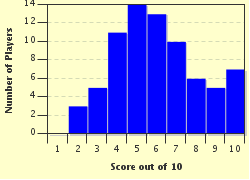Quiz Answer Key and Fun Facts
1. Czar Peter the Great founded St. Petersburg in 1703 after he took the area from the Swedish and named it after his patron. According to legend, which building seen in the picture, was the very first to be built in the new city?
2. Which palace served as the first royal residence in St. Petersburg and was nicknamed the Russian Versailles?
3. Which daughter of Peter the Great, who ruled Russia as empress from 1741-1762, is credited with advancing St. Petersburg's position in Europe by supporting the arts and science and rejecting Prussian influences in Russia's foreign policy?
4. The reign of Catherine the Great from St. Petersburg is often called what in Russian history?
5. The 1825 Decembrist Revolution in Peter's Square was led by over 3,000 soldiers who were opposed to which emperor taking the throne?
6. Which building now stands on the location where Emperor Alexander II was assassinated in 1881?
7. The Revolution of 1905 started in St. Petersburg when workers at the Putilov Plant went on strike and other plants followed suit. Although Nicholas II was able to maintain power, as a result of the revolution, he was forced to create which governing assembly that met in the Taurida Palace?
8. To what name was Petrograd (the name St. Petersburg had from 1914-1924) changed on January 24, 1924?
9. Who is Tanya Savicheva who died in 1944?
10. In 1991 during the first Russian Presidential Election, voters in the city chose to rename Leningrad to St. Petersburg again. They also elected which person, who was mentor to Vladimir Putin, as its first elected mayor?
Source: Author
Joepetz
This quiz was reviewed by FunTrivia editor
bloomsby before going online.
Any errors found in FunTrivia content are routinely corrected through our feedback system.
